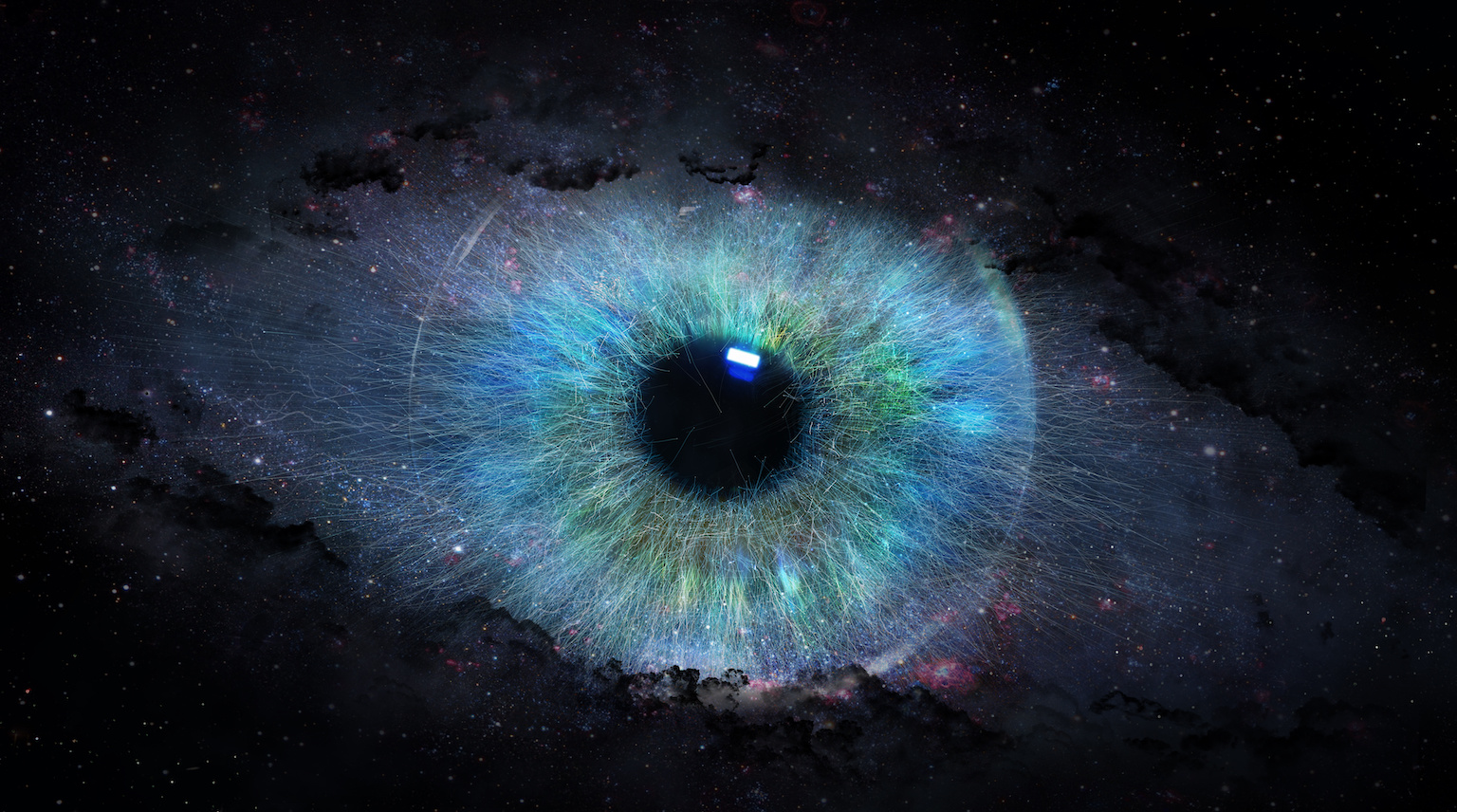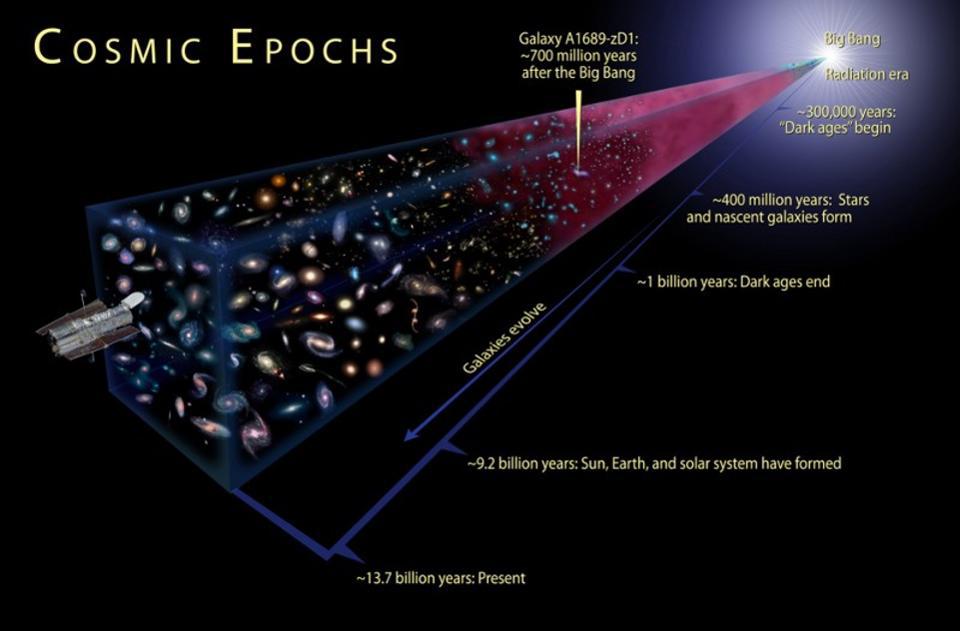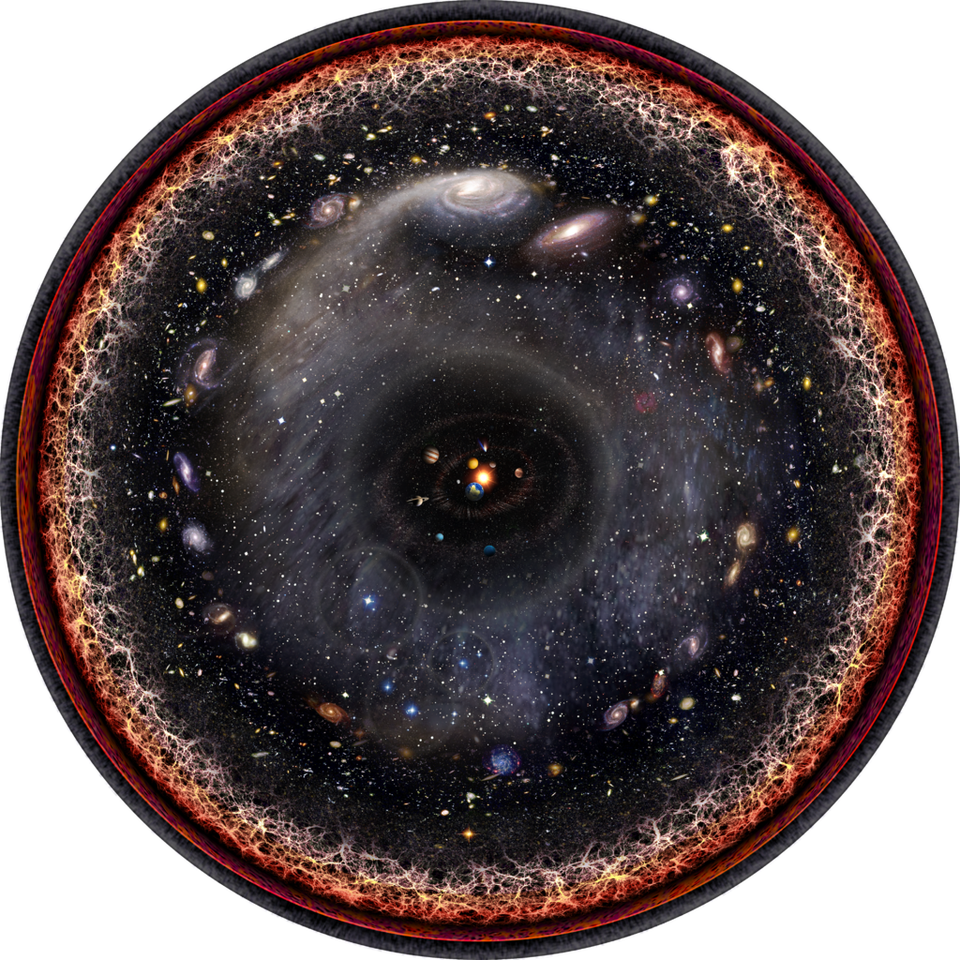Ask Ethan: Can science prove the existence of God?
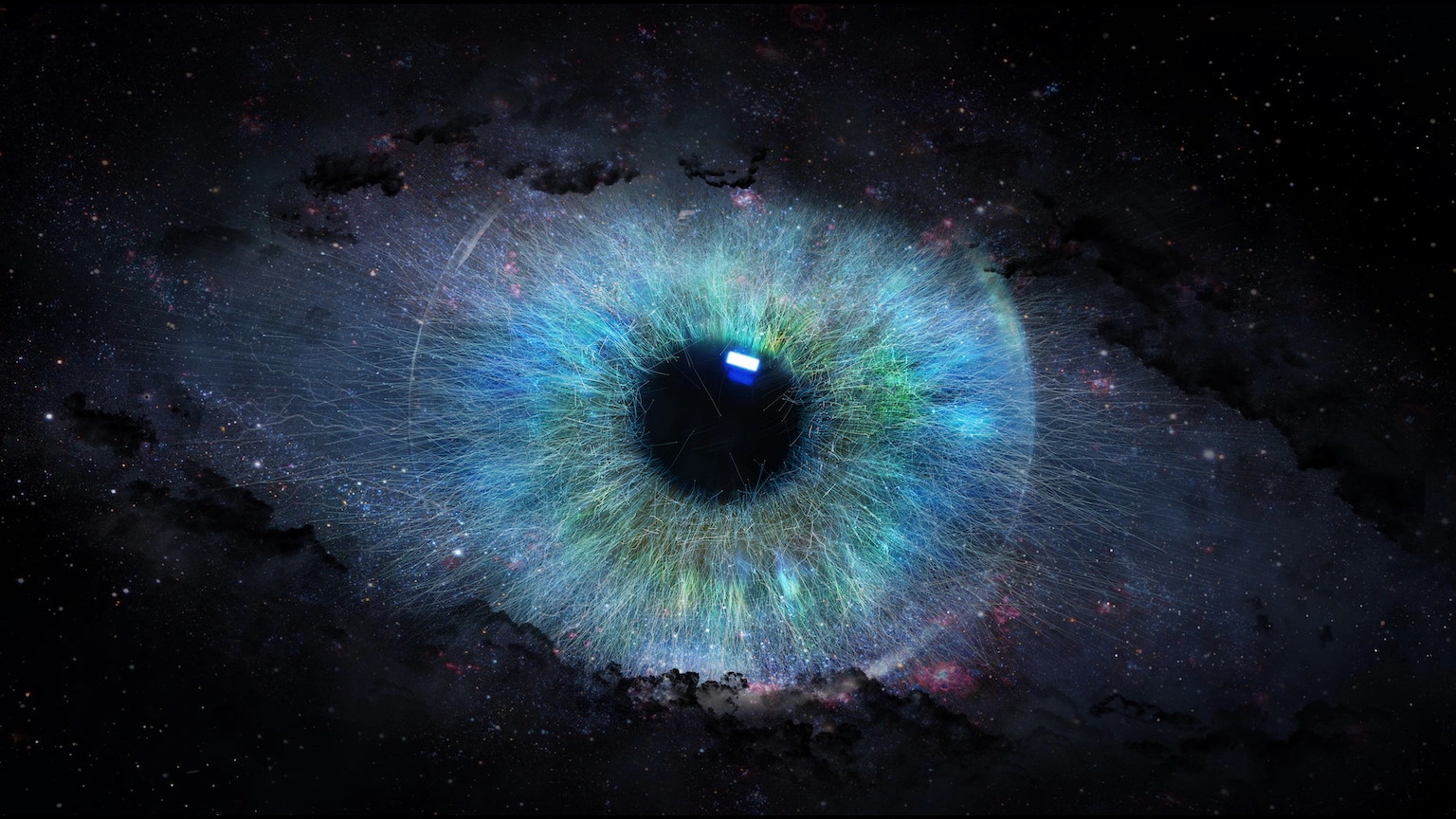
- The process of science, through inquiry, experiment, observation, and measurement, has revealed extraordinary details about our physical Universe.
- However, despite all that we know and all that we’ve learned, there remain questions that are beyond the ability of science to answer.
- If scientists can’t rule it out, shouldn’t they admit that “God” is a possible answer to those questions? And if not, what makes it such an unscientific approach?
In all the Universe, there’s one question that has been an overwhelming source of wonder, possibility, and fear for humanity: where did all this come from? All that’s out there, on Earth and among the planets, stars, and galaxies beyond our own, is tremendous, vast, and awe-inspiring, but it comes to us without explanation. If we want to know the answers to any question we can ask, including about the extent, contents, and age of the Universe, we have two choices. We can either philosophize, where our speculations are limited only by our imaginations, or we can engage in scientific inquiry, and let the information gleaned from examining the Universe itself guide us towards the answer.
For countless generations, what we know as “scientific inquiry” was extremely limited and primitive, and the answers given to the biggest existential questions were not subject to scrutiny. Often, the answers that were given and accepted were rooted in unsubstantiated assertions and mythology. Today, however, the process of science provides us with our best approximation of the nature of reality. But are we short-changing ourselves by limiting our perspective to what science informs us of? That’s what Dan Petkunas wants to know, inquiring:
“Why do astrophysicists not address the possible existence of God? Do they have evidence ruling it out?”
The answer to the second question, of course, is “no.” But the first question? That’s a tougher one. Let’s find out.

Credit: MichaelMaggs Edit by Richard Bartz/Wikimedia Commons
Let’s go back to the idea of coming up with an answer to a question whose resolution isn’t apparent. The list of such questions we can ask is practically endless and includes some of the biggest ones we can fathom.
- Where did human beings come from?
- What are we made of, down at a fundamental level?
- How large is planet Earth, and where did it come from?
- Is the Earth the same age as the Sun, or is one older than the other?
- Are there “other Earths” around “other Suns” out there in the Universe?
- How far does space go on for: is it endless, does it end after some point, or does it loop back on itself?
- Has the Universe been in existence for an eternity, or did it have a moment, some finite amount of time ago, where it sprang into existence from a state of non-existence?
And so on and so on. For as long as humans remain curious about the great unanswered questions surrounding all of existence, we can ask questions such as these. On the surface, there are many possible and compelling answers, but in reality, we assume there is a “correct” answer out there to each one.

Credit: Robin Dienel/Carnegie Institution for Science
That aspect — of coming up with the correct answer to a question such as the ones just mentioned — is what separates scientific inquiry from all the other approaches we can take. Sure, we can come up with possibilities, craft stories and arguments that support them and discount or disfavor others, and inspire others to believe the same way that we do; that’s how humanity functioned for millennia, since prior to the dawn of recorded history.
But in science, approaching a question by exploring the possibilities is only the start. Whether you investigate something scientifically or not is entirely dependent on what you do next: specifically, on whether or not you’re willing to tease out what the observable, measurable consequences of one particular idea will be, and to then put those consequences to the test.
The idea of testability, where you allow nature to decide the answer to a question with multiple possible outcomes, is what separates scientific from non-scientific endeavors.

Credit: Markus Poessel/Wikimedia commons; retouched by Pbroks13
For example, if objects fall down because the Earth is their home, then we should be able to take an object to any location we can imagine, let it go, and watch it fall down to Earth. Yet once we venture far enough away from the Earth — far enough so that the gravitational force of our planet isn’t the dominant force acting on an object — we see that’s no longer the case. Therefore, from a scientific perspective, we can conclude that “the Earth being the ‘natural’ home of objects” is not a valid scientific interpretation of the data. Through experiment, observation, and measurement, we can falsify, or invalidate, an idea that doesn’t hold up to scientific scrutiny.
However, if we theorize that objects fall down because all objects in the Universe exert an invisible, attractive, gravitational force on one another so long as they have mass, that will get us a lot farther. We can experiment with objects of different masses and measure how their distances, velocities, and accelerations all vary and evolve with time. We can place them at different relative locations and measure the forces between them. We can conduct all sorts of inquiries, from terrestrial experiments here on Earth to astronomical observations between the various objects found all throughout the Universe. For almost all of them, the predictions you’d tease out of this theory would match precisely what you’d observe and/or measure from your inquiries.

Does that mean that we can say, definitively, that “objects fall down because all massive objects exert a gravitational force on one another?”
Not quite. Science is a very powerful tool, but it doesn’t allow you to conclude that one idea is correct or not in some sort of absolute sense. Instead, it tells you whether a particular idea is valid or not when you apply it to a certain set of physical conditions. The idea that all massive objects exert a gravitational force on one another is the cornerstone of Newtonian gravity, and it’s a tremendously successful one for a wide variety of applications: from objects falling on Earth to the motions of celestial bodies in the Solar System and beyond.
But its successes aren’t universal. There are plenty of circumstances where the predictions of Newton’s gravity have been shown to be incorrect, and inconsistent with observations. If Newtonian gravity were precisely correct, the planet Mercury’s orbit wouldn’t precess as we observe it to. If Newtonian gravity were absolutely correct, clocks wouldn’t run at different rates when placed at different elevations. If Newtonian gravity were always correct, objects without mass, like light waves, wouldn’t be “bent” when they themselves passed by the vicinity of other massive objects.

Credit: WillowW/Wikimedia Commons
But all of these things do happen, and more. Mercury’s orbital path does precess, and precessed by a greater amount than Newtonian gravity predicts. Clocks at different elevations do run at different rates, and the difference between the rates at which they do run cannot be explained solely by special relativity and the relative speeds of the two clocks. And light, which is inherently without mass, is bent by the presence of masses, both within the Solar System and on large cosmic scales.
Why?
What does it mean that Newtonian gravity, a tremendously successful theory over a wide range of applications, doesn’t see agreement between its predictions and a variety of experiments?
From a scientific perspective, this is actually wonderful news: it’s a golden opportunity for advancement. Whenever a scientific theory — particularly one that’s been so successful up until this particular moment — fails to make predictions that align with either observation or experiment, that’s a signal that you’ve reached the limit of where your theory applies. All of a sudden, you’ve ventured beyond the realm of your theory’s validity, and you’ll need a newer, better, more comprehensive theory to supersede it.

Credit: NASA & ESA
In the case of gravitation, there were many competing ideas that were put forth as potential successors to Newtonian gravity. This was good: it meant that with each new idea that was put forth, theoretical predictions could be extracted from them, and then we could test and measure various phenomena that put them to the test.
It wound up being Einstein’s General Relativity, which replaced Newton’s idea of a universal gravitational force between all massive objects with the notion that space and time themselves composed a fabric — spacetime — and that the presence of not only mass, but energy of all types, curved that fabric. Furthermore, all objects, massive and massless alike, would travel through this curved spacetime, and the curvature of spacetime would determine the motion of objects.
This picture has withstood the test of time, passing every observational and experimental test we’ve thrown at it, from atomic clocks measuring the passage of time at attosecond precision to inspiraling pulsars to gravitational waves carrying energy away from merging black holes. In every testable way, Einstein’s theory remains valid over the entire range that gravitation has been explored.
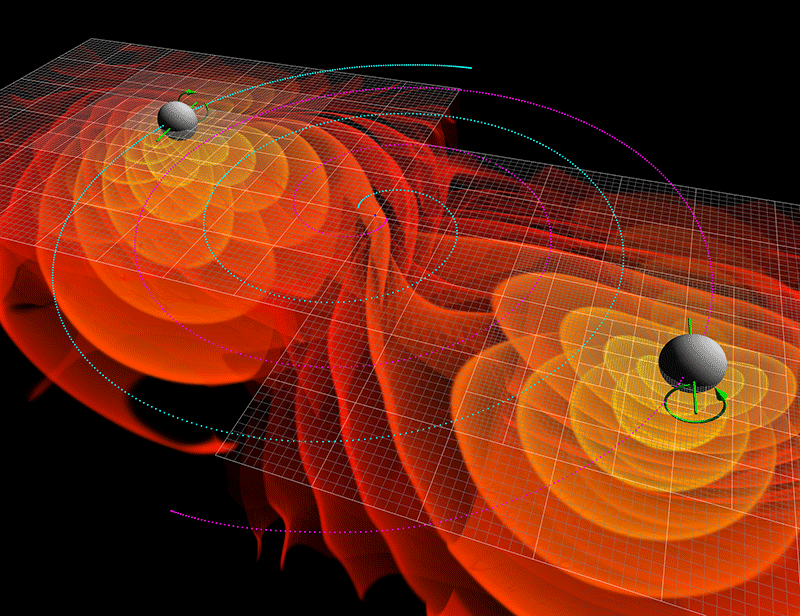
Credit: C. Henze/NASA Ames Research Center
The idea behind all scientific theories, although it’s exemplified spectacularly by the story of gravitation, is one and the same. We can make a model of reality, but that model is only as good as the scientific tests that support it. So long as the theory’s predictions and our experimental/observational results are in agreement, we remain in the realm of the theory’s validity. When the results disagree, we’ve gone beyond the realm of validity, and that informs us that a new, superior theory is needed.
What will that new, superior theory look like?
In order to supersede and replace a theory where we’ve reached the limits of its validity, a novel theory needs to do three things.
- It needs to reproduce all the successes of the old theory; where the old theory gave correct predictions, the new theory needs to give predictions that are at least as good.
- It needs to explain the observations that the previous theory could not. It’s more of a post-diction than a prediction, but whatever observations stymied the prior idea need to be perfectly well-explained by the new theory.
- And, perhaps most importantly, it needs to make novel, never-before-tested predictions that differ in some quantitative way from the old theory.
Only if your new theory can clear all three of these quite substantial hurdles can it hope to become the new scientific consensus: as the “default starting point” for all future scientific inquiry.
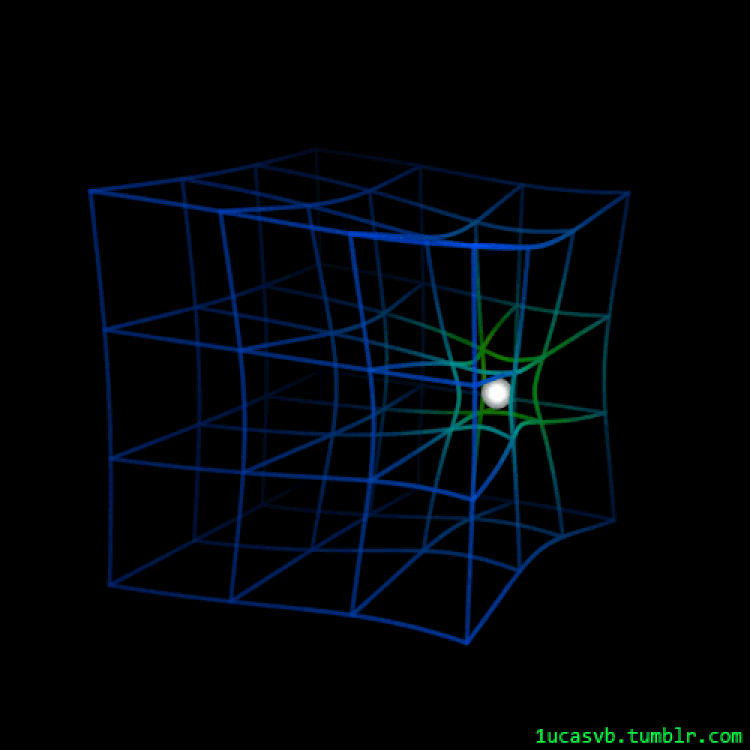
Credit: LucasVB
At a fundamental level, this is how the enterprise of science works, from the smallest subatomic particles up to the largest structures in the observable Universe. And it’s for this very reason that the existence of God is not brought up in scientific inquiry: because it’s fundamentally antithetical to the process of science.
Science is rooted in the idea that truths about the Universe — or at least, the closest approximations to “truth” that we can achieve — are best revealed by probing the Universe itself, and letting the answers that we derive from our inquiries guide us toward our construction of our best picture of what reality truly is.
To invoke God, or more generally, to invoke the supernatural, is tantamount to giving up on a natural explanation for the phenomena we observe in our Universe. The fact that the laws of nature appear to be so consistent:
- from one moment to the next,
- from one location to another,
- across all temperature and energy ranges,
- and irrespective of how we set up our experiments,
shows us that this assumption about how scientific inquiry works has not, under any circumstances, reached the end of its range of validity.

Credit: E. Siegel; ESA/Planck and the DOE/NASA/NSF Interagency Task Force on CMB research
When you’re doing astrophysics, it’s not true to assert that astrophysicists don’t consider the possibility that God exists. In fact, it’s not even true to assert that astrophysicists don’t consider the possibility that God plays an active role in shaping the Universe. What we do in astrophysics, however, just like we do in all of science, is attempt to explain the Universe naturally: through laws, relationships, correlations, theories, models, and by comparing predictions with experiments, measurements, and observations.
The reason that God isn’t talked about in the literature with any sort of frequency is that, when it comes to explaining what we can observe and measure, is that “natural” explanations have shown themselves to be perfectly sufficient. If we found evidence for some sort of supernatural intervention in our experimental apparatuses or our observational data — and that’s something we can quantify — its discovery would be revolutionary.
As it stands, however, “natural” appears to do the job perfectly well, from before the Big Bang up through the present day. The question of God’s existence remains untested by astrophysics. However, all astrophysicists, in the attempt to naturally explain every physical phenomenon in the Universe, must recognize that these attempts may come up short. But as long as it remains plausible, or even possible, we’d be doing ourselves a tremendous disservice to give up on the scientific approach. That’s why astrophysicists don’t consider God as an explanation for the phenomena we observe: not because it isn’t possible, but because scientific inquiry remains the most successful route for uncovering the physical truths governing the Universe!
Send in your Ask Ethan question to startswithabang at gmail dot com!
